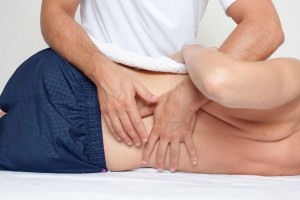Great Gentle Exercises that Improve your Spinal Flexibility.
Spines are designed to move, bend twist and work. Guess what happens when we spent more hours sitting than moving .We shorten our muscle length, thicken our ligaments, and reduce the overall capacity of joints to move. Combine this with our muscle fibre becoming less elastic as we age, stiffness is the end result.
So What Can you Do?
Sit less, move more!
- Try these 2 gentle stretches to get you moving again!
Cat/ Camel Stretch
- Perfect beginners stretch. Mobilises, the spine, imbibes healthy nutrients into the joints and discs. An oil change for your spine.
- Get down onto your hands and knees, with your hands under your shoulders and knees under your hips in the table top position.
- Tuck your chin onto your chest , round your back towards the ceiling until you feel a stretch in your lower, middle and up back (see picture). Hold the stretch for 2 seconds. Try to exhale as you do this movement.
- Taking a breath in, drop your stomach and spine towards the floor, whilst looking up at the roof (see picture). hold for 2 seconds. The stretch should be felt in the muscles of the lower, middle and upper back adjacent to the spine.
- Repeat the movement, 5 time in each direction.
- Stop the stretch if it causes any pain.
Kneeling lunge Stretch
- Great Stretch for opening the hips after a long period of sitting.
- Kneel in the lunge position with left knee , resting a towel or pillow. The right leg is forward as pictured with the right foot flat on the floor.
- Your back should be straight and you shoulders directly over your hips
- To begin stretch, lean forward with the right leg/knee, remember to keep your back straight, and shoulders over the knees. Try no to arch the back
- The stretch will be felt in the upper thigh and front of the hip of the left leg.
- Hold a gentle stretch for 30 seconds.
- Repeat both sides aim to do 3 times daily
- Stop if you experience any pain
Both stretches are a great way, to improve your spinal flexibility. These exercises are so important to a healthy spine given to nearly every patient we see at Fluid Chiropractic.
Stay tuned for more stretches next week.

